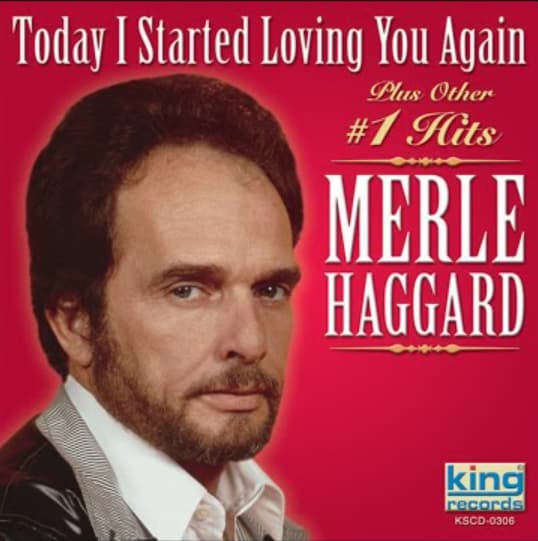
A song that captures the desolate, cyclical agony of a broken heart that simply refuses to let go, finding new pain in the dawn of every day.
There are certain songs in the canon of country music that rise above mere popular hits and become, instead, essential chapters in the human condition. “Today I Started Loving You Again,” written by the incomparable Merle Haggard and his then-wife, the talented Bonnie Owens, is one such masterpiece. Released in 1968, this desolate ballad found its initial home, perhaps surprisingly, as the B-side to Haggard’s smash hit, “The Legend of Bonnie and Clyde,” and appeared on the accompanying Capitol Records album, The Legend of Bonnie & Clyde. In a twist of fate—or a quiet testament to its slow-burning, profound emotional power—the original Merle Haggard version of “Today I Started Loving You Again” never actually charted. It was a sleeper, a haunting piece of poetry that was too real, too raw, to be instantly consumed by the hit-making machinery of the day.
Yet, this lack of initial chart success only highlights the song’s true, enduring legacy. Its power wasn’t in a rapid climb up the Billboard ranks, but in its ability to burrow deep into the soul of every listener who has ever experienced a love they couldn’t extinguish. It is the definitive portrait of endless heartache. The song’s meaning is stark, clear, and devastating: the narrator wakes up each morning fully convinced that today, finally, they will stop loving the person who left them. But as the sun rises, the agonizing realization hits—the grieving process starts all over again. The heartbreak is not a temporary affliction; it is a permanent, daily ritual. The lyric “I went to sleep a dreamin’ and I woke up in pain” captures this cycle perfectly, a testament to the fact that for some losses, there is no moving on, only a new, fresh beginning of the sorrow.
The story behind its composition speaks volumes about the creative and personal dynamic between Merle Haggard and Bonnie Owens. Though married at the time, their relationship—like so many beautiful things—had its complexities. Owens was a powerful force in Haggard’s early career, helping him navigate the industry and often serving as the meticulous chronicler of his songwriting bursts. The authorship itself—a collaboration between the man renowned for his brutally honest poetry and the woman who lived the life beside him—lends the song an undeniable authenticity. It’s a moment of shared, retrospective pain poured into three simple, agonizing verses. For older readers, those who remember vinyl singles and the magic of a B-side gem, this song is a pure wave of nostalgia. It reminds us of a time when the music itself, not the marketing, determined a song’s immortality. It became a country music standard not because of a publicity push, but because other artists, from Jerry Lee Lewis to Waylon Jennings and, later, Sammi Smith, all immediately recognized its perfect, universal tragedy and covered it, introducing it to new audiences over the decades. This quiet, non-charting B-side became a Mount Rushmore moment in American songwriting, the perfect soundtrack for those reflective, late-night moments when the old wounds start throbbing once more. It’s the sound of a heart trying to close a door only to find the latch broken, letting the memory rush back in every single morning.